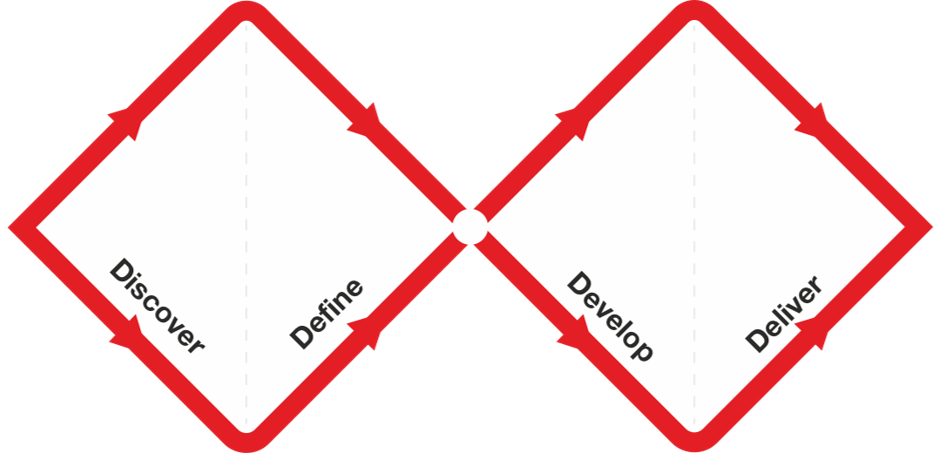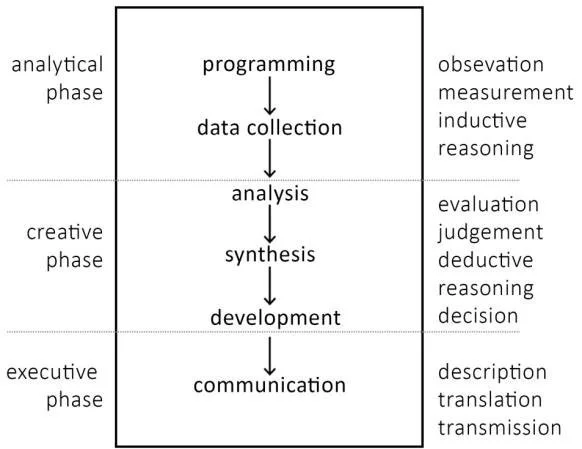Week 05: Thoughts on ideas
By the end of this week, you should be able to:
Research and explore different ways of thinking.
Imagine and communicate a selected way of thinking through a line drawing.
Document and communicate your working process on your blog.
Participate in and reflect upon debate on the ideas wall.
Manage your independent learning through good planning and self direction.
How do we, as designers, think? What is our thought process, and how does this influence our work?
Question: Exploring methods of thinking and how designers adopt different approaches to exploring ideas and solving problems.
We have been asked to consider our thought process and structure, which are fundamental to our practice.
This week you will:
Explore and find an example of a way of thinking. This could be from the area of arts, design, philosophy or science.
Choose a thinker or a process and summarise in a black line drawing.
Explore models of thinking – what sorts of theories and process models exist to help us generate ideas?
Document your whole process and reflect upon it in your blog.
Upload your final black line drawing to the ideas wall and a link to your blog showing process and reflection.
Lecture - How do we generate ideas? Susanna Edwards
This week’s lecture looks at the various models used to create ideas. These principles are used in regular practice today and shared by top agencies and from it, we are encouraged to think of the processes in place and how ideas are generated.
Various thinking processes and design methods discussed in the lecture include:
The Design Council - Double Diamond method
The double diamond approach has been adopted in the Falmouth Flexible course and is a universally accepted depiction of the design process.
This drawing shows a visual representation of the design and innovation process. It’s a simple way to describe the steps taken in any design and innovation project, irrespective of the methods and tools used.
Bauhaus circular diagram
We also look at how the design process started to be taken seriously in the work of the Bauhaus in the early 20th century, specifically in industrial design. We explore a circular diagram which shows the study of space, colour, composition, representation, rotate. This radical diagram reference is still a relevant model today in a multidisciplinary practice.
They also introduced exercise classes into their routines to enhance their levels of thinking.
Bruce Archers framework for design
Published in 1963 we discover how Bruce Archer played a key role in developing a scientific framework for developing the design process into key sections. It became recognised that the wait time between the consideration time frames was stifling the flow of the design process.
And in the 1960s Archer attempted to turn the design process into science by developing and formalising a creative process with a combination of the intuitive and the cognitive.
The double diamond method by The Design Council
We consider how the process has changed in modern-day practice through the introduction of different technologies, sustainability, and legislation. Today the design process is still evolving and redeveloping, matching the world around us but a flexible infrastructure is essential as a guide to follow and to respond quickly and appropriately to creative change.
We look at the double diamond process model devised by The Design Council. This simple graphic follows the 4 stages Discover, Define, Develop and Deliver.
The first phase of divergent thought
Discover. The first diamond helps people understand, rather than simply assume, what the problem is. It involves market research and spending time with people who are affected by the issues.
The second phase of divergent thought
Define. The insight gathered from the discovery phase can help you to define the challenge in a different way. A filter to what prototypes need to be reworked before development.
The third phase of divergent thought
Develop. The second diamond encourages people to give different answers to the clearly defined problem, seeking inspiration from elsewhere and co-designing with a range of different people, programmers and marketing teams. Taking through to the final sign stage in delivery.
The final quarter of the double diamond
Deliver. Delivery involves testing out different solutions at small-scale, rejecting those that will not work and improving the ones that will.
Targets, evaluation. Final testing, production, approval and launch.
We explore the thinking hats method with a colour based on each step of the process. This technique allows any issues or problems to be examined from each angle in turn without any one person or viewpoint dominating the meeting or discussion.
Edward De Bono - Six thinking hats
We explore Edward De Bonos process in how a group will approach a creative problem from all possible angles.
It is thought that from a group, De Bono suggested that they approach the problem at the same time wearing a group of six metaphorical hats.
Each hat represents a different thought process
White hat - What information do we have about the issue
Red Hat - Feelings and emotions. Also used to encourage how customers might also feel
Black Hat - Caution criticism and risk. The Hat of logic. The most useful of the six hats.
Yellow Hat- Benefits and feasibility. the most optomistic
Green Hat - The hat of creativity. New approaches and alternative solutions
Blue Hat - About process control and should be looked at the process as a whole. Directed by the chairperson.
Because the technique has to be looked at from all different angles, not one view or person allows dominating the thought process.
READ, WATCH, LISTEN - ‘The divided brain’ by Ian McGilchrist
The divided brain
A short cartoon from RSA animates which discusses the use of the right and the left sides of the brain and how we develop our rational thoughts and contradictions.
How our thinking process and imagination helps us envisage what we are to create in our own creativity.
References
The double diamond design process - Design Council
https://www.designcouncil.org.uk/our-work/skills-learning/the-double-diamond/
Week 05 - Ways of thinking Tom Finn and Kristoffer Soelling, Regular Practice
Ways of thinking
Thinking through making - We discover how designers break their creative block by doing something completely different.
Thomas Heatherwick - A multi-disciplinary designer who works on the theory of thinking through making, through scupltures or models, so breaking away from ‘thinking’ or ‘over-thinking’ by doing something creative to break the process of creative block or getting stuck in a rut.
Bruno Munari - An Italian Artist of machines, made suspended bizarre sculptural objects, that served no purpose, apart from to create a physical manifestation of cultural objects to break away from his practice
Karl Gerstner - Designing programmes by creating a Morphological Box which is a type of Road Map in a practical grid.
Dogville - A set of rules that were set upon by film directors, such as shooting on locations, not altering the sound, or using filters. Steering your resources to use your ideas more effectively.
I looked at different ways of thinking and how this generates new ideas
-
Analytical thinking is a type of thinking that involves breaking down complex information or concepts into smaller parts to understand them better. It consists of examining a problem's details and nuances, looking at it from different angles, and identifying patterns or connections.
-
Critical thinking is a type of thinking that involves analyzing and evaluating information or arguments to form a judgment or conclusion. It involves questioning assumptions, considering alternative perspectives, and weighing evidence to make informed decisions.
-
Concrete thinking is a type of thinking that focuses on tangible, real-world objects or experiences. It involves thinking about specific examples rather than abstract concepts or ideas.
-
Abstract thinking is a type of thinking that involves considering ideas or concepts that are not tied to specific, tangible objects or experiences. It involves thinking in terms of generalizations, principles, or theories.
-
Divergent thinking is a type of thinking that involves generating a wide variety of ideas or solutions in response to a problem or challenge. It consists in thinking outside the box and exploring unconventional or unexpected options.
-
Convergent thinking involves narrowing down a wide range of ideas or solutions to identify the best or most appropriate option. It involves applying logical reasoning and evaluating the pros and cons of each possibility to arrive at a conclusion.
Reflection and thoughts
How can I incorporate these ideas into my own design process?
Rest and not thinking
I found this lecture fascinating not just on ‘how we think’, but on the importance of ‘not thinking’, how we switch off and carry on automatic mode. I had never identified how the ‘rest’ or ‘switching off’ from the thinking process helped me to concentrate when necessary. (The divided brain).
It made me realise that my ‘downtime’ car journey after work is probably as important as my productive hours at work. As is my exercise classes (Bauhaus) to enhance creative thinking.
My downtime from creativity is listening to music. I constantly have music on in the studio, in the house, in the car and it relaxes me. Maybe I’ll find my creative thinking process by not thinking!
Mapping out a thought process influential in my design work
It’s vital to plan the design process in a structured way to identify any potential problems or areas of confusion. It also helps:
Generate new ideas. When a designer is brainstorming, it can be helpful to see their ideas laid out visually. This can help to spark new ideas and connections.
Communicate the designer's vision to others and collaboration. When a designer maps out their thought process, they can create a visual representation of their design.
It helps to track the progress. By planning and mapping out their progress to see how they are progressing towards their goals. This can help to identify any areas that need more attention.
Overall, mapping out a thought process is a valuable tool for a graphic designer. It can help clarify thinking, generate new ideas, track progress (and stay on budget).




